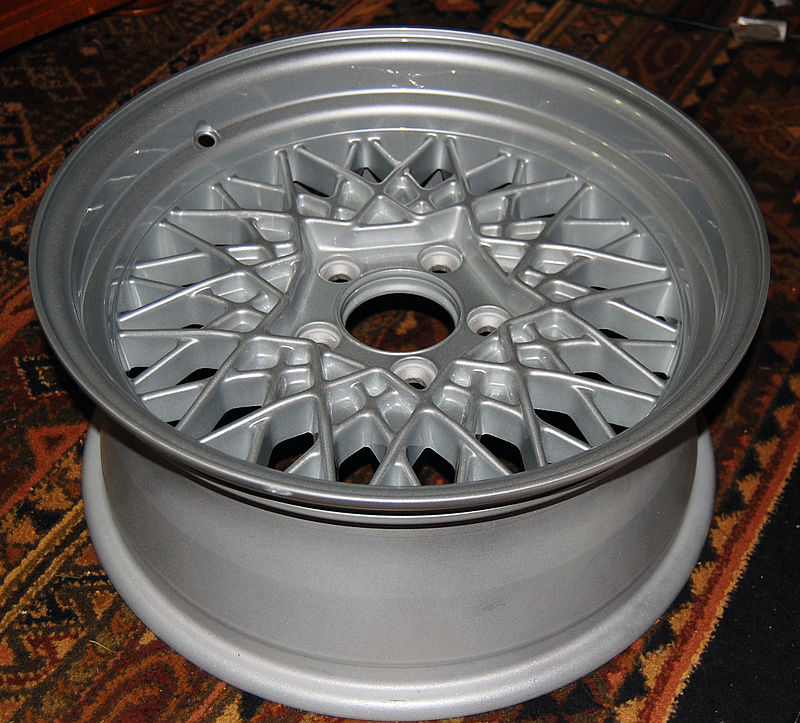Difference Between Ferrous and Nonferrous Alloys
Key Difference – Ferrous and Nonferrous Alloys
An alloy is a metal made of two or more metallic elements to enhance strength and corrosion resistance. The key difference between ferrous and nonferrous alloys is that ferrous alloys contain iron in their composition whereas non-ferrous alloys do not contain iron as an element. Both of these alloys are extensively used in the modern industrial and engineering applications, but for different uses. Because the two alloys possess unique properties, and it differs depending on the other metallic elements present in the alloy and the conditions applied in the production process. However, both ferrous and non-ferrous alloys are equally important in a wide range of industrial applications.
What are Ferrous Alloys?
Ferrous alloys are the alloys containing iron and some other metallic elements. Those alloys are extensively used in a wide range of industries due to its characteristic properties such as greater strength, toughness, and flexibility. These properties slightly vary from one type to another depending on their composition, heat treatment procedures, which result in changes in the final micro-structure. Examples of ferrous alloys are carbon steels, stainless steels, alloy steels, cast steel and cast iron.
Even though, the usage of non-ferrous alloys, composites, and polymers has emerged in the market, the applications of iron based alloys are still relatively high. It is due to the low cost, high modulus of elasticity, and the ability to attain a wide range of mechanical properties.

Stainless Steel
What are Non-ferrous Alloys?
Non-ferrous alloys contain no iron as a metallic element, and it may contain two or more other metallic elements. Some properties of non-ferrous alloys are very important over ferrous alloys due to its excellent electrical conductivity and corrosion resistance. These alloys can be considered as the second most important engineering material. In addition, some are good thermal conductors, and can be easily machined, welded, brazed and soldered. The properties of non-ferrous alloys vary over a wide range depending on the metallic elements combined to form the alloy and the process conditions. Therefore, their applications also differ from one alloy to another.

Aluminium Alloys
What is the difference between Ferrous and Nonferrous Alloys?
Types:
Ferrous Alloys: Iron (Fe) is used as the base metal in ferrous alloys. Various types of ferrous alloys are available in the market. Some of the examples are;
- Carbon steels- contain carbon and small amounts of other alloying elements, such as manganese or aluminum.
- Alloy steels- contain low to high levels of elements such as chromium, molybdenum, vanadium and nickel.
- Stainless steels- contain chromium and/or nickel additions. They are highly corrosion resistant.
- Cast iron- contains high amounts of carbon. Ductile iron, gray iron, and white cast iron grades are types of cast iron.
- Cast steel – made by pouring molten iron into a mold.
Non-ferrous Alloys: Non-ferrous alloys can be categorized according to the base metallic element which is used to make the alloy. They are; Aluminum alloys, Beryllium alloys, Magnesium alloys, Copper alloys, Nickel alloys, and Titanium alloys.
Properties:
Ferrous Alloys: The properties of ferrous alloys vary over a wide range as the composition and the production process vary from one alloy to another. In general, other metallic elements are added to improve corrosion resistant properties and to enhance the strength. However, in addition to iron (Fe), various metallic elements are added to obtain advanced properties, depending on the nature of the application.
Non-ferrous Alloys:
All non-ferrous alloys do not share a common property; it varies according to the composition and the heat treatment method in producing the alloy. Some of the common features of different alloys are listed below.
- Aluminum alloys: They are 30 times stronger than the pure aluminum.
- Beryllium alloys: These alloys are expensive due to the complex production process.
- Magnesium alloys: Poor corrosion resistance in a marine environment. Poor fatigue, creep and wear resistance.
- Copper alloys: Most of the copper alloys are excellent heat and electrical conductors.
- Nickel alloys: They are high-temperature alloys and show a greater corrosion resistance.
- Titanium alloys: They have excellent corrosion resistant properties and high-temperature properties.
Image Courtesy:
1. Stainless Steel Sheet Plate Strip Coil Circle By Jatinsanghvi (Own work) [CC BY-SA 3.0], via Wikimedia Commons
2. Aluminium wheel spoke design By Bubba73 at English Wikipedia, [CC BY-SA 3.0], via Wikimedia Commons
ncG1vNJzZmivp6x7pbXFn5yrnZ6YsqOx07CcnqZemLyue8OinZ%2Bdopq7pLGMm5ytr5Wau26yxKupqK2jYq6vsIyvqmamn6Ozpr7RqKysZZGhubDF0mg%3D